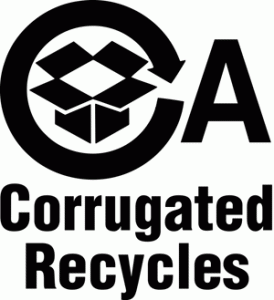Although relatively few corrugated boxes have wax applied to them (about 3% of all corrugated produced), they have long been a “problem” material when it comes to recycling. Those days may be numbered.
Wax coatings have traditionally been applied as a moisture barrier to preserve the strength of a box holding wet or iced products such as fresh fruit and vegetables, meat, poultry and seafood. The problem was that the waxes made the boxes difficult to recycle along with the other corrugated. The recycling mills couldn’t use them, and retailers didn’t like sending them to the dump. And because it was sometimes hard for the young kids employed at the back of stores to tell the difference between waxed and non-waxed boxes, a lot of “good” corrugated went to landfill as well.
PPEC was part of a North American industry alliance in the 1990s that came up with the idea of identifying the waxed boxes in some way so that they could be easily separated from

the others. We suggested that the words for wax in English, French and Spanish be printed on the box flaps. Unfortunately, the idea never took off, mainly because some box manufacturers felt that identifying their boxes as waxed was a negative, that it made them a target. At the same time, the reusable plastic crate lobby was exploiting the image of waxed corrugated going to the dump as an entry point to gain market share against the traditional corrugated box system. On top of that, some coatings manufacturers were going around to mills and corrugated manufacturers claiming that they had developed new coatings that were recyclable.
To get a handle on the issue, the US-based Fibre Box Association, working through the Corrugated Packaging Alliance, developed a science-based protocol that coatings manufacturers would have to meet to be able to claim that their coatings were recyclable in mills throughout North America. Company products meeting the standard were certified and allowed to use the wax alternatives logo.
The use of wax alternatives has ramped up significantly over the last few years, and this month was reported, for the first time, to have overtaken sales of boxes using traditional coatings. Almost 50 different wax alternatives have now been certified as recyclable. This is great progress and an industry success story.
